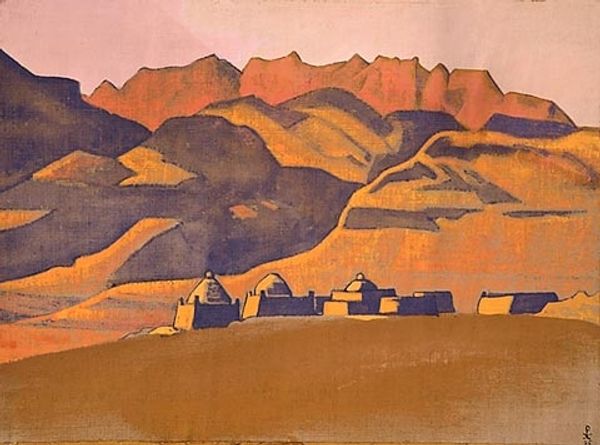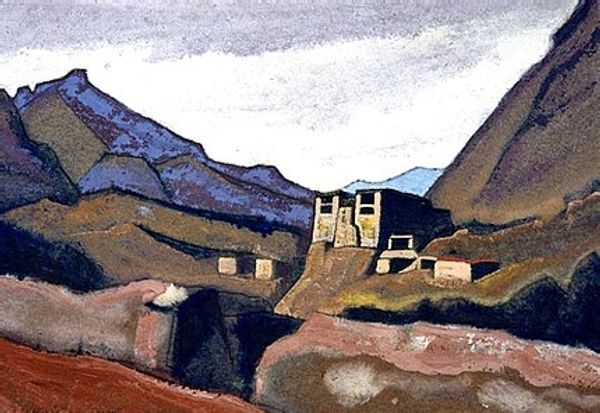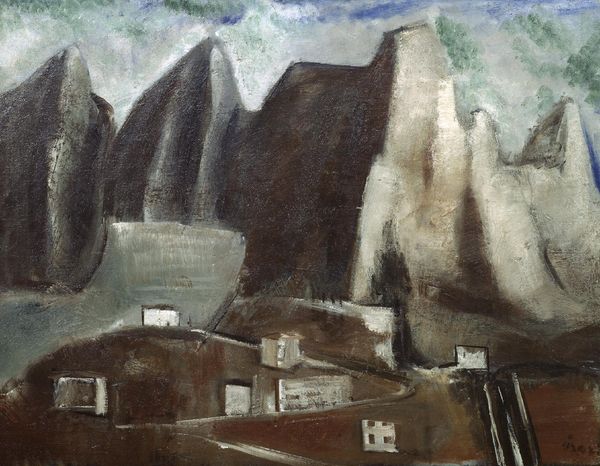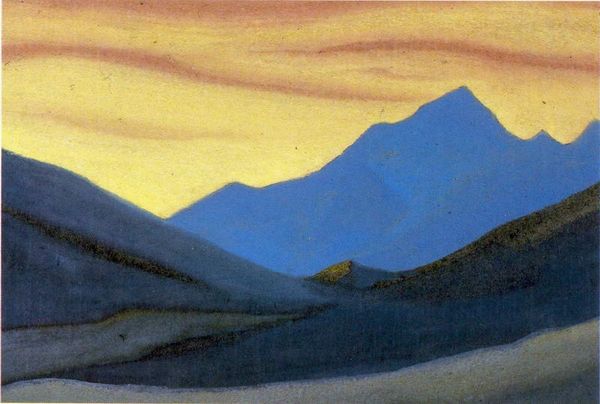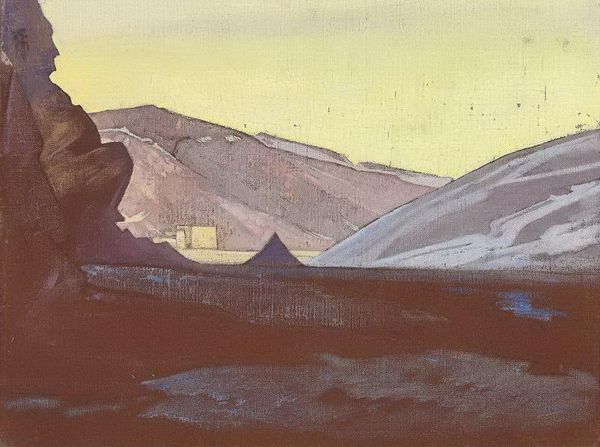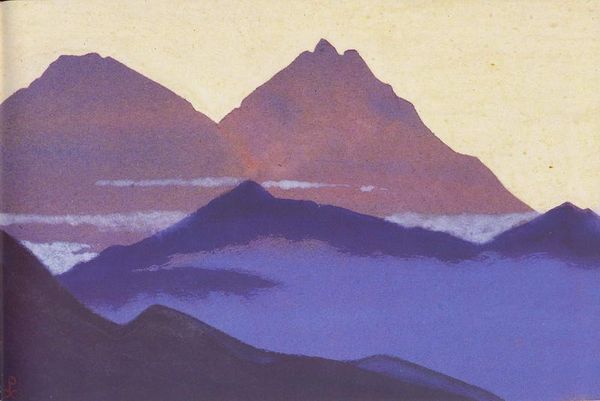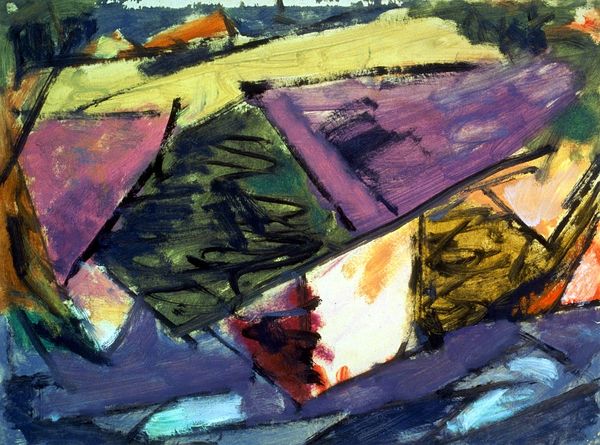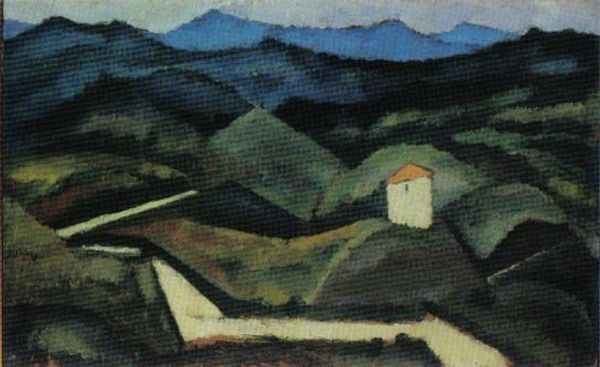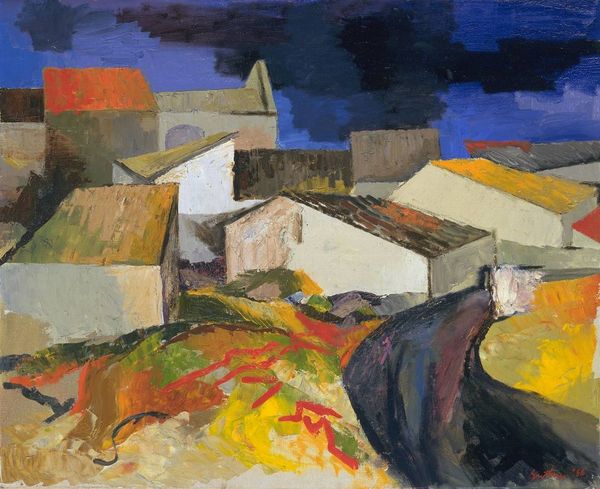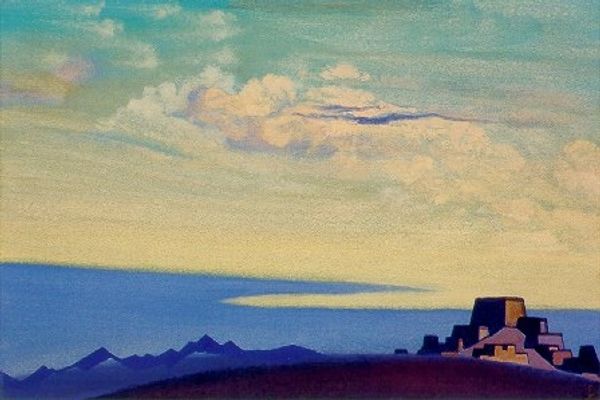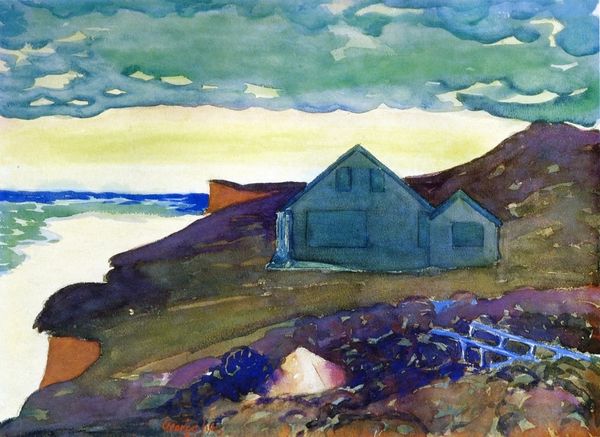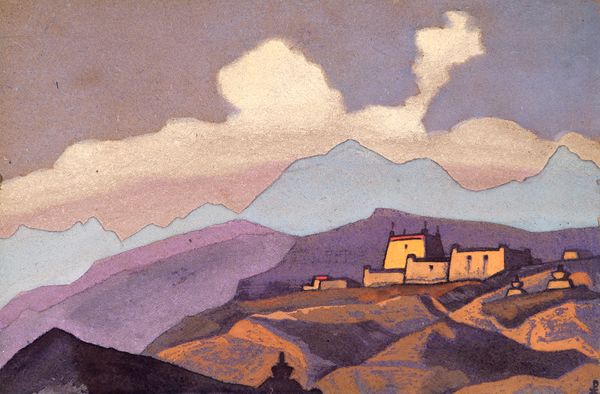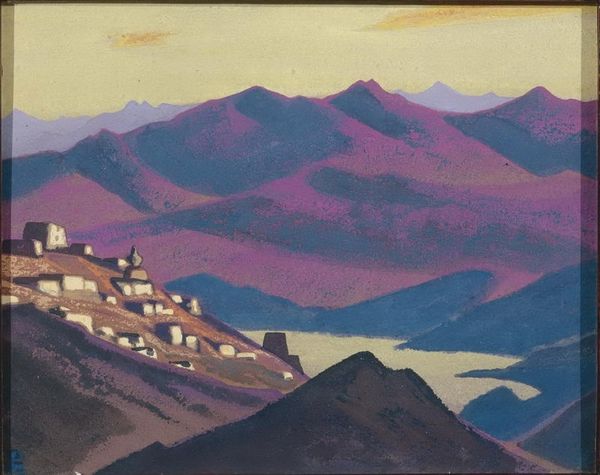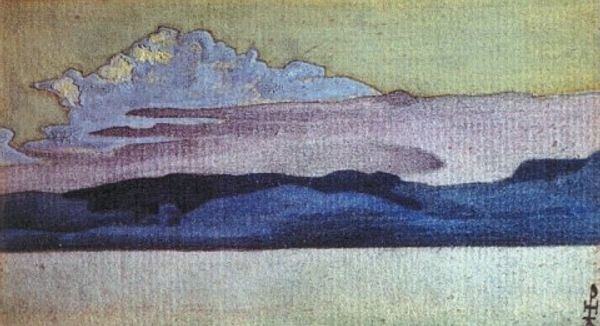
Dimensions: 46 x 305 cm
Copyright: Public domain
Editor: This is "Koksar" by Nicholas Roerich, painted in 1944, using oil paint. The striking purples and golds of the mountains really dominate the scene, but the buildings seem so carefully placed. What do you see in this piece? Curator: I’m drawn to the interplay between the depicted landscape and the materiality of its production. Consider the pigments Roerich used: where did these intense colours originate? Were they locally sourced, impacting the economics of the region? How does the labor involved in pigment creation and paint application contribute to our understanding of the artwork? Editor: That's interesting; I never really think about where the colours actually come from! So the physical creation of the paint influences your understanding? Curator: Absolutely. Also consider the social context: 1944, near the end of World War II. Roerich, known for his spiritual pursuits and the Roerich Pact for the protection of cultural institutions, creates a landscape focused on what? Solid structures, the implied permanence of those buildings juxtaposed with potentially unstable, foraged and made materials and how this relationship to preservation and endurance intersects with wartime anxiety. Editor: That makes me think differently about the placement of those buildings in the landscape – the process echoes what it depicts! Curator: Exactly. It's the interaction of material choices, artistic process, and the broader socio-political landscape that makes this, ostensibly simple painting, so rich. What did you initially think of when you looked at this image? Has it changed now? Editor: Well, I liked the colors, but I wasn’t thinking about what they *meant*. Now I see how the entire production relates to both the landscape depicted and the anxieties of the period. It adds a new dimension!
Comments
No comments
Be the first to comment and join the conversation on the ultimate creative platform.
